For such a large, potentially menacing building, the Punakha Dzong sits remarkably lightly on the beautiful landscape. Positioned at the junction of the valley’s two rivers it combines huge strategic, architectural and religious importance. Visiting was a perfect finale to our visit to the Punakha Valley. But that’s getting ahead of things. Getting to the valley was an adventure in itself.
Nothing adequately prepares you for the view from Dochula Pass, the crest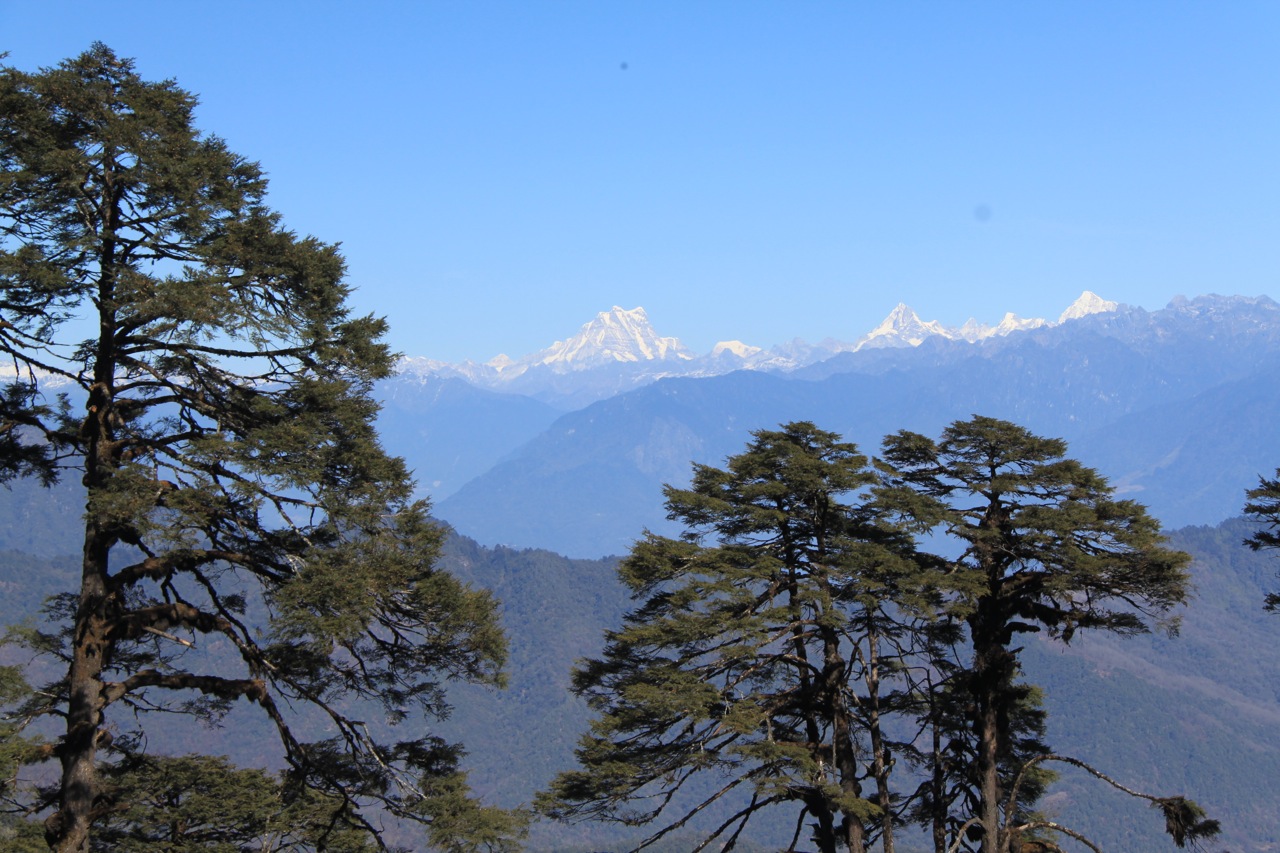 of the fiercely steep and sharply curvaceous road between Bhutan’s capital Thimphu and the Punakha Valley. As soon as you crest the peak everywhere seems dwarfed by the massive sweeping panorama of the Bhutan Himalayas, white tipped against an impossibly blue sky and
of the fiercely steep and sharply curvaceous road between Bhutan’s capital Thimphu and the Punakha Valley. As soon as you crest the peak everywhere seems dwarfed by the massive sweeping panorama of the Bhutan Himalayas, white tipped against an impossibly blue sky and 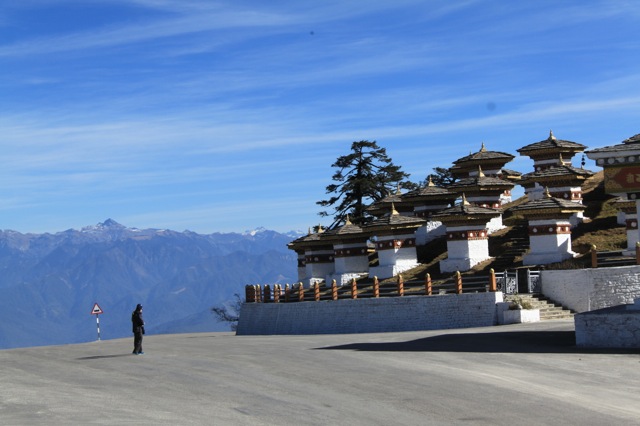 perfectly framed by the elegant evergreens. And forming what must be one of the most elegant roundabouts in the world is the group of 108 matching whitewashed and golden topped stupas, donated by the Royal Family in memory of the Bhutan soldiers who lost their lives in a violent skirmish routing Indian rebels who had set up home in forests near the border.
perfectly framed by the elegant evergreens. And forming what must be one of the most elegant roundabouts in the world is the group of 108 matching whitewashed and golden topped stupas, donated by the Royal Family in memory of the Bhutan soldiers who lost their lives in a violent skirmish routing Indian rebels who had set up home in forests near the border. 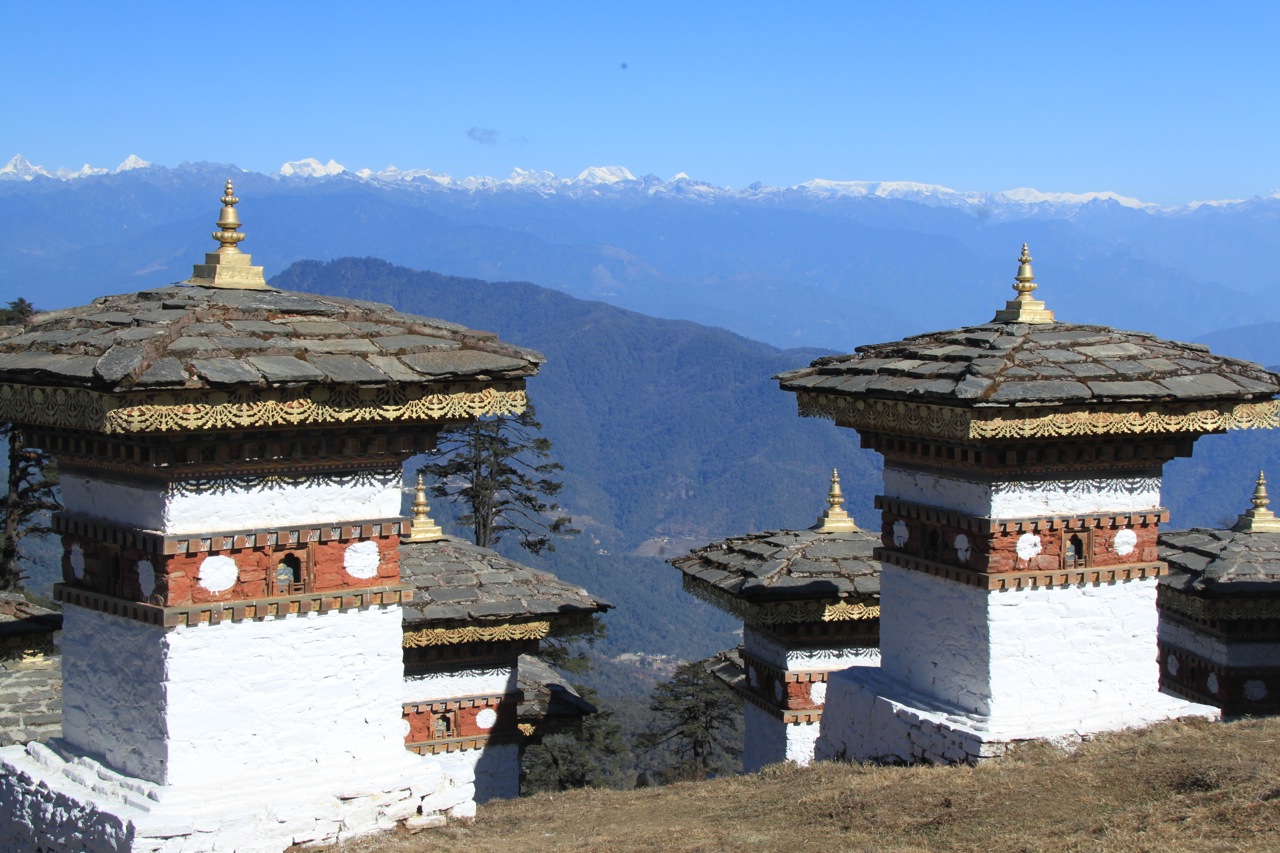
The already spectacular drive has been made all the more interesting by the fact that major improvements are under way and the road is only opened for set time spans during the day. This leads to a slightly manic, generally courteous free-for-all as private vehicles, taxis, tourist and public buses vans and trucks and engage in an intricate quadrille of tailgating and overtaking to make sure they make it to each checkpoint on time.
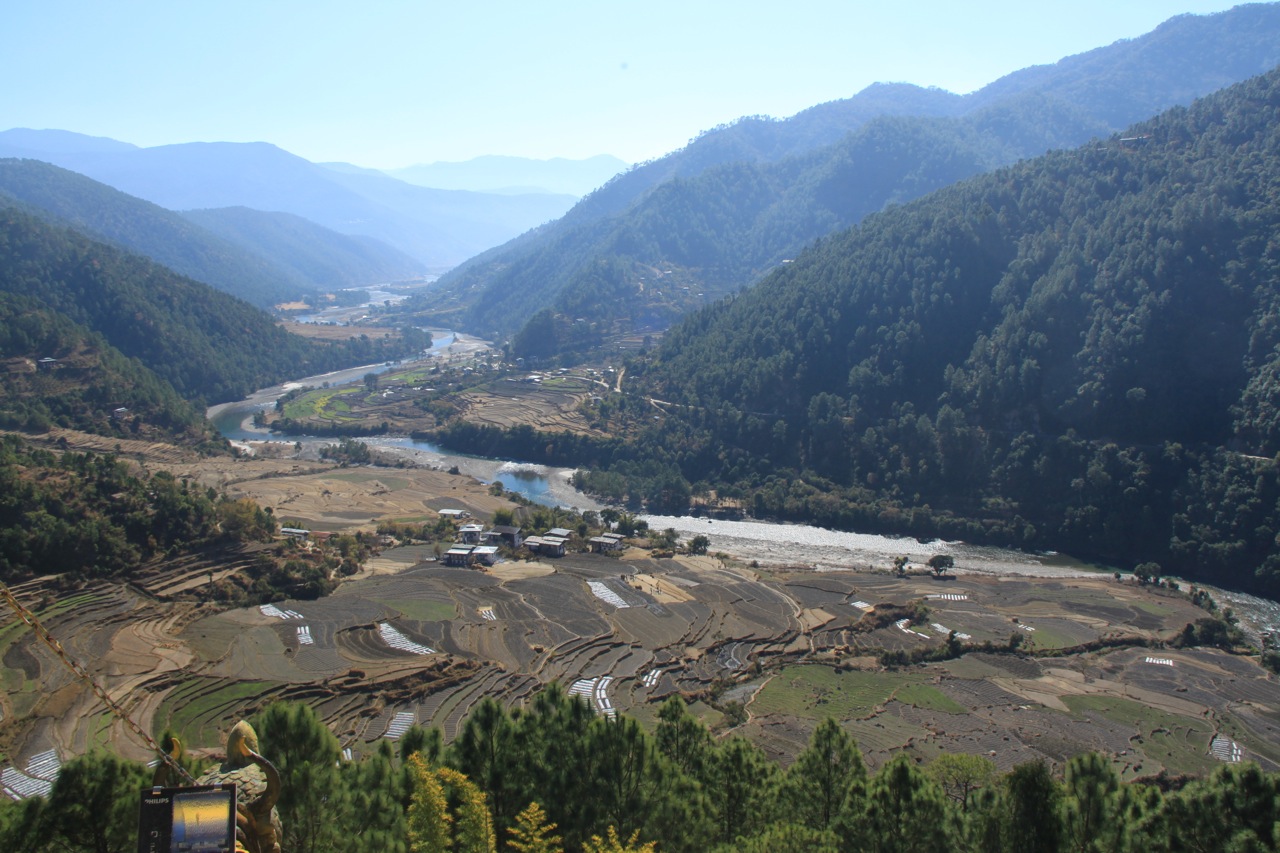 Punakha is a long, wide fertile valley, where two crystal clear rivers (the Mother and Father rivers) meet and the weather is perfect for a wide range of crops from rice to bananas, some having two seasons. The valley is an intricate geometric tapestry of terraced fields in which not a metre of land is wasted, and is dotted with traditional houses. For more than 300 years it was the nation’s capital until that was moved to Thimphu in the 1950s. First stop is the Chimi Lhakhang, the monastery
Punakha is a long, wide fertile valley, where two crystal clear rivers (the Mother and Father rivers) meet and the weather is perfect for a wide range of crops from rice to bananas, some having two seasons. The valley is an intricate geometric tapestry of terraced fields in which not a metre of land is wasted, and is dotted with traditional houses. For more than 300 years it was the nation’s capital until that was moved to Thimphu in the 1950s. First stop is the Chimi Lhakhang, the monastery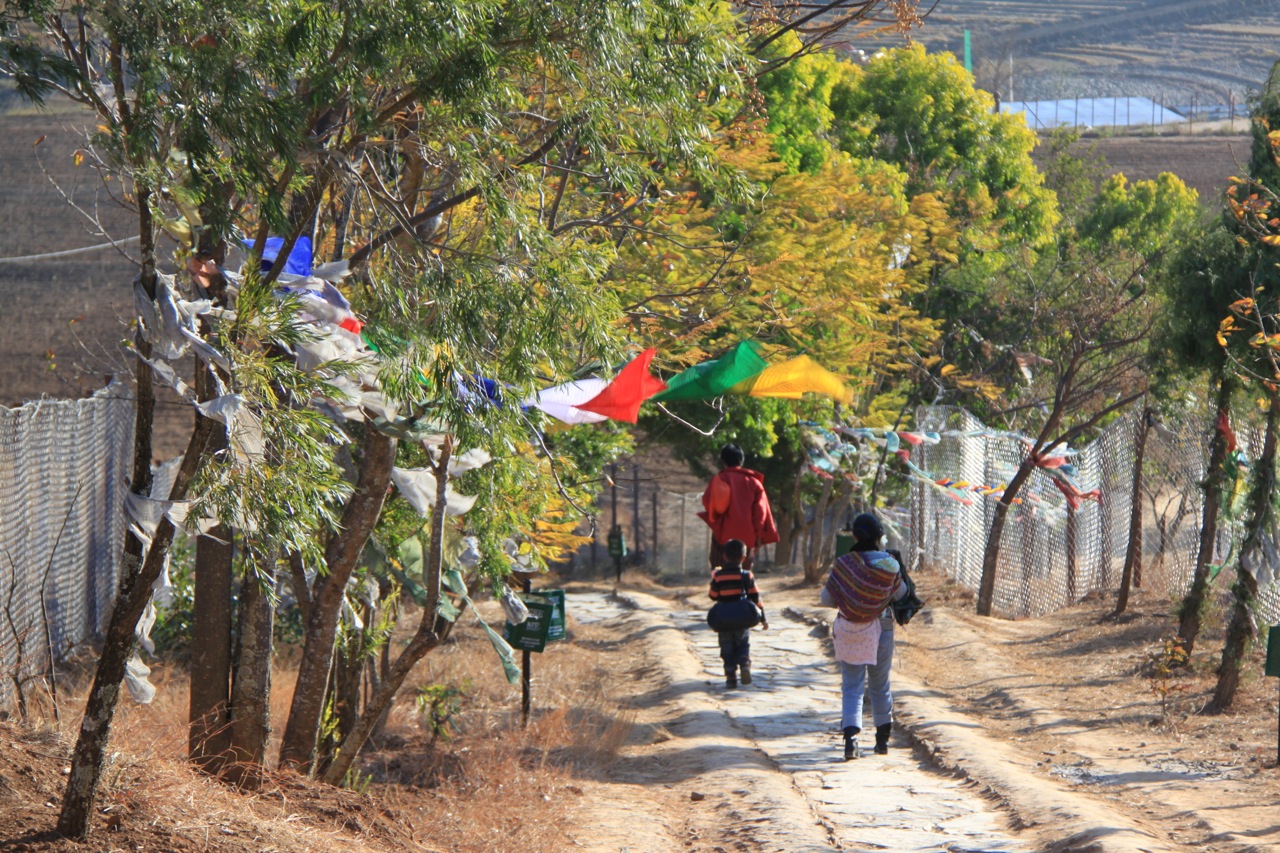 built by the Divine Madman, one of the most important and colourful characters from Bhutan’s past, and central to its development. The monastery is a popular pilgrimage point for infertile women or families seeking to have their children named or blessed.
built by the Divine Madman, one of the most important and colourful characters from Bhutan’s past, and central to its development. The monastery is a popular pilgrimage point for infertile women or families seeking to have their children named or blessed.
The hotel where we are stopping is built a little way up one of the wooded hillsides with a dream view. In the morning, from the little balcony, I can watch the sun suddenly sparkle dazzlingly off the cliff-top nunnery far in the distance then slither enticingly across the hills setting the whole valley alive with its warmth.
After breakfast, we climb through the paddy fields, most of them newly ploughed ready for the new crop, past men working on the houses and 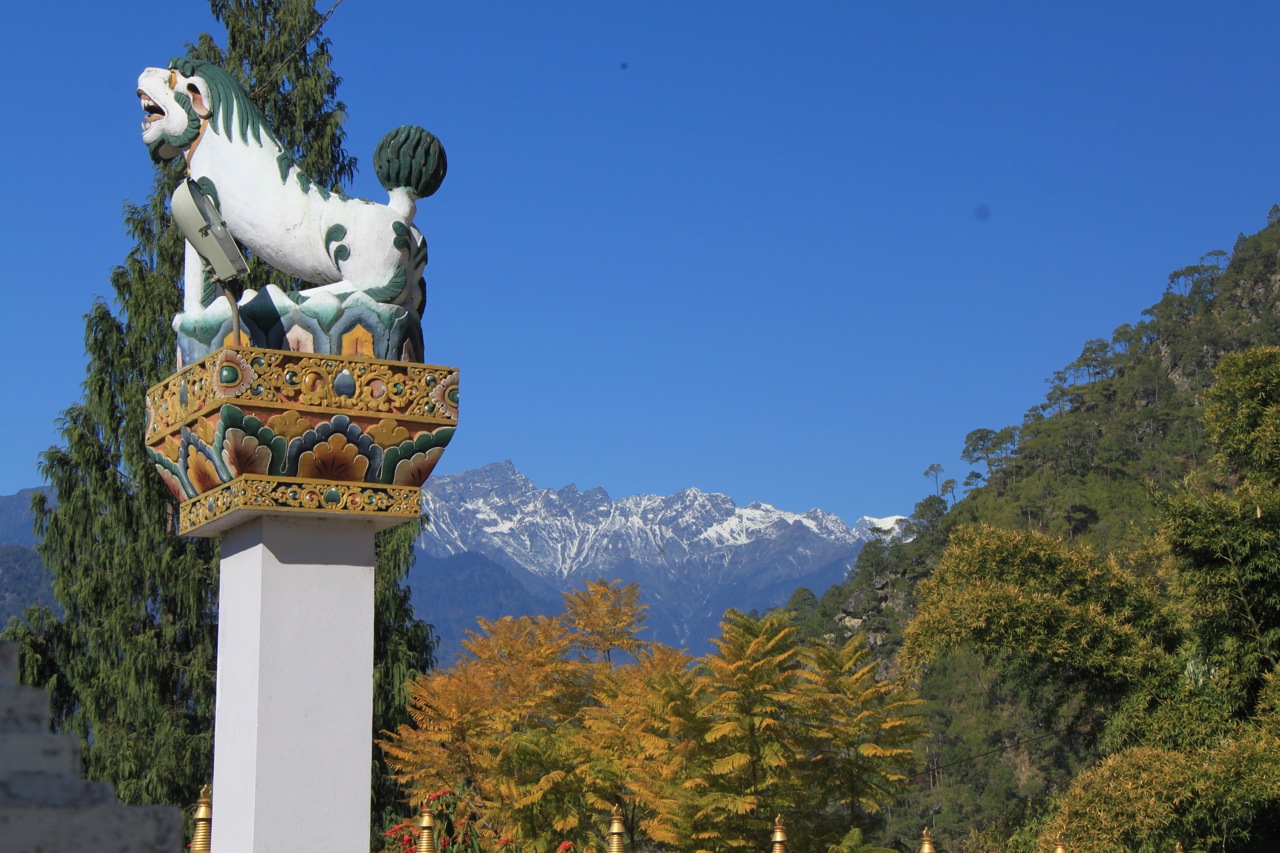 women winnowing rice, to the Khamsum Yulley Namgyei Chorten. This monastery although only built in 1999, looks timeless, and is dedicated to the protection of the then Crown Prince, now King Jigme Khesar Namgyel Wangchuck. You could pass hours here, just staring at the view laid out on all sides.
women winnowing rice, to the Khamsum Yulley Namgyei Chorten. This monastery although only built in 1999, looks timeless, and is dedicated to the protection of the then Crown Prince, now King Jigme Khesar Namgyel Wangchuck. You could pass hours here, just staring at the view laid out on all sides.
Also situated in on hilltops with a mesmerizing view of the valley and
its wide snaking rivers meandering in huge arcs, is the Sang Chhen Dorji Lhendup 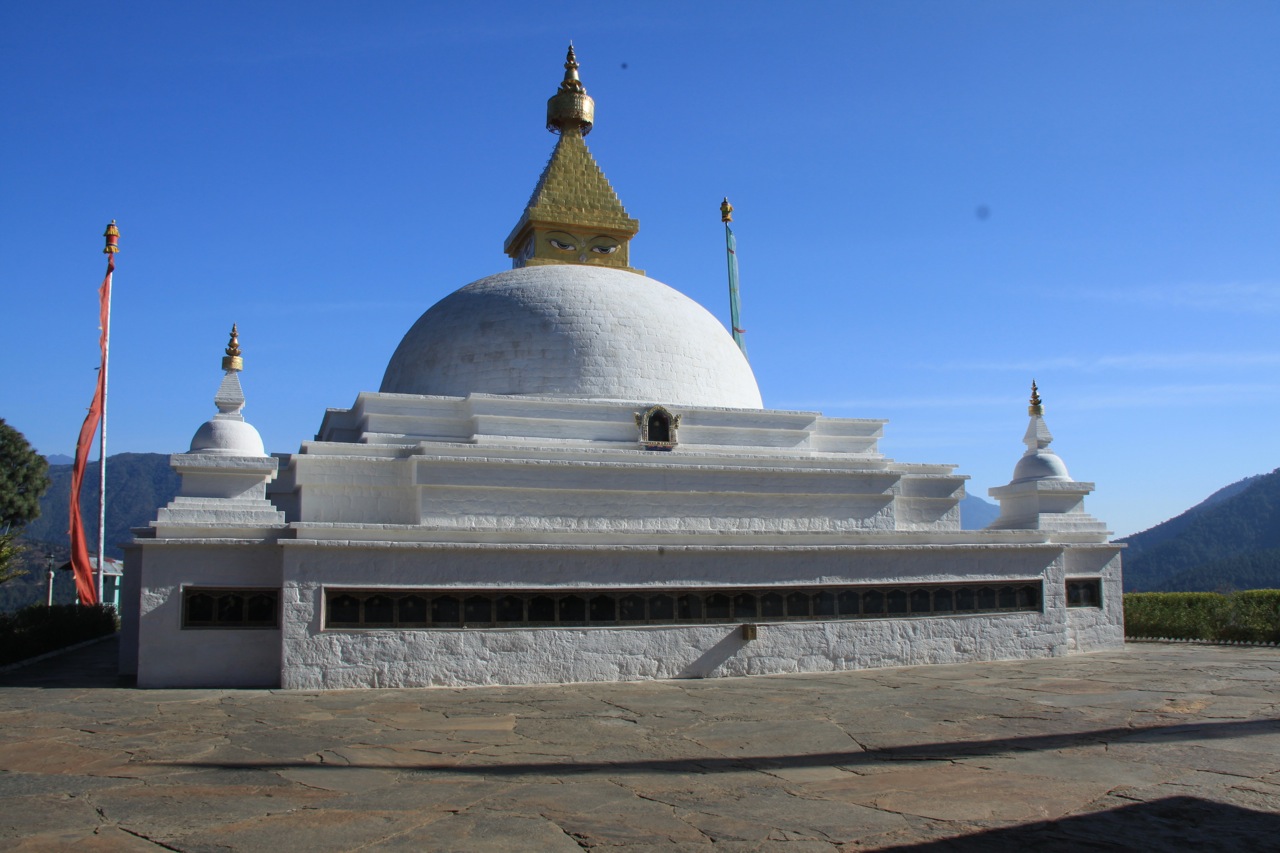 nunnery which was donated by the former king who lives nearby. There was also time to pop over to the small village of Talo which is home of the fourth king’s four Queens (all sisters) where a group of locals were having an impromptu archery contest along the roadside. Archery is Bhutan’s national sport and at this level came accompanied by wild whooping every time the arrow got close to the target.
nunnery which was donated by the former king who lives nearby. There was also time to pop over to the small village of Talo which is home of the fourth king’s four Queens (all sisters) where a group of locals were having an impromptu archery contest along the roadside. Archery is Bhutan’s national sport and at this level came accompanied by wild whooping every time the arrow got close to the target.
But highlight of any visit to Punakha is the exquisite Paro Dzong, only 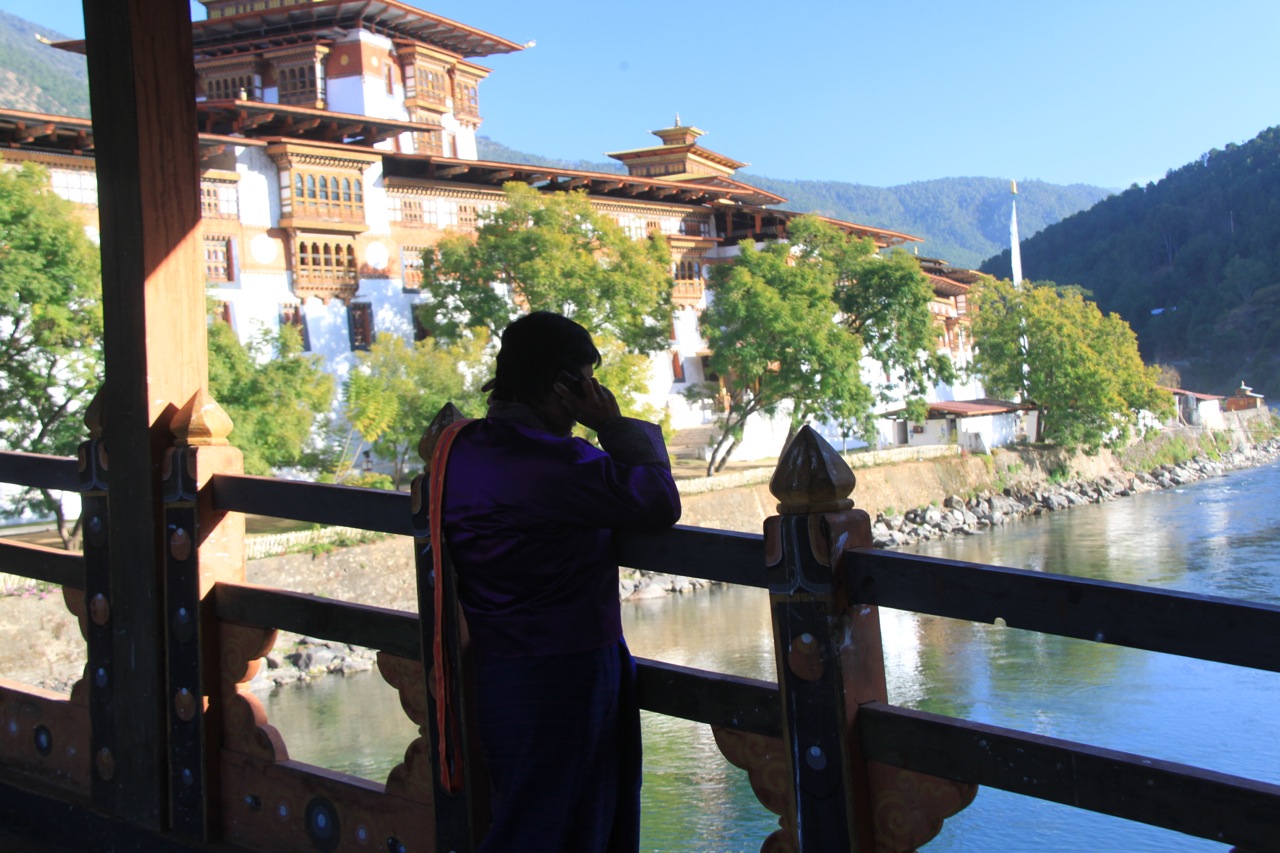
the second Dzong to be built in Bhutan and sitting on the junction of the two rivers. Entered via a beautiful wooden bridge its huge elaborately decorated walls tower over the protected, sun-filled courtyards one of which is dominated by an enormous fig tree. Bhutan’s most important item, an image of Chenresig, the white Bodhisattva of Compassion who is the protector of religion in Bhutan is kept in the Dzong’s utz.
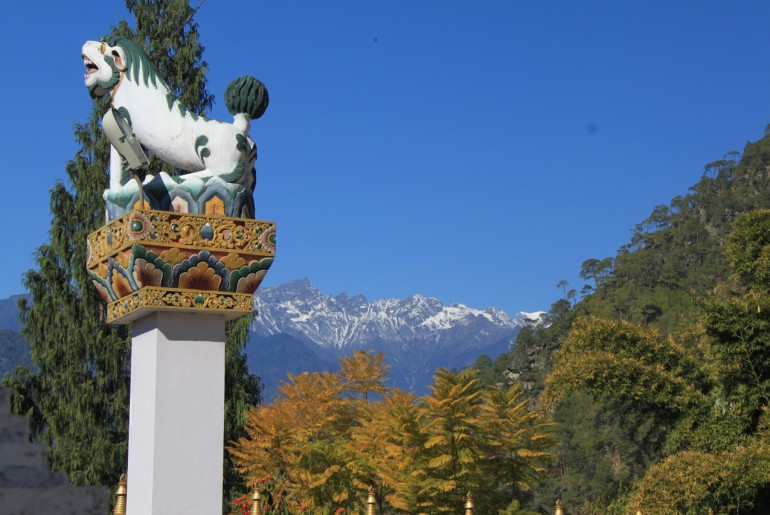
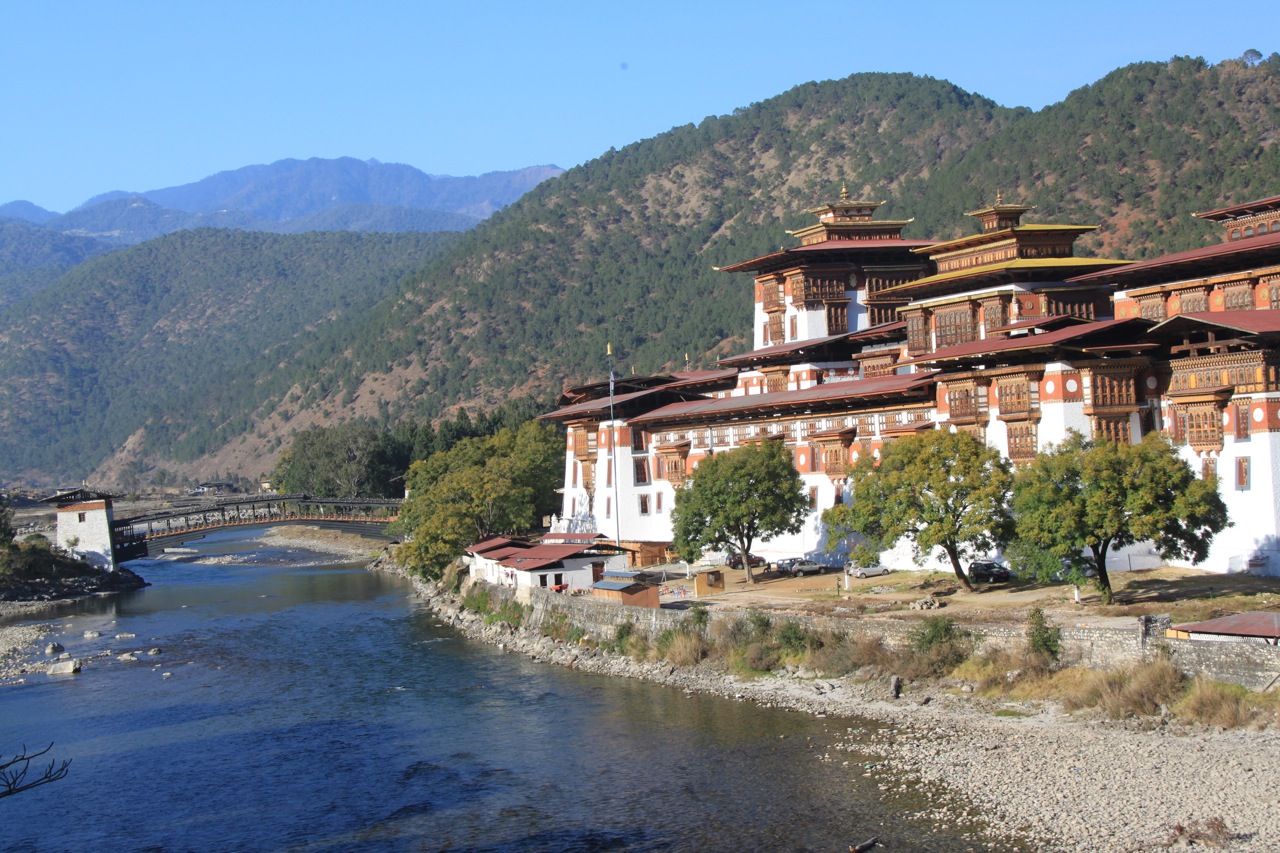
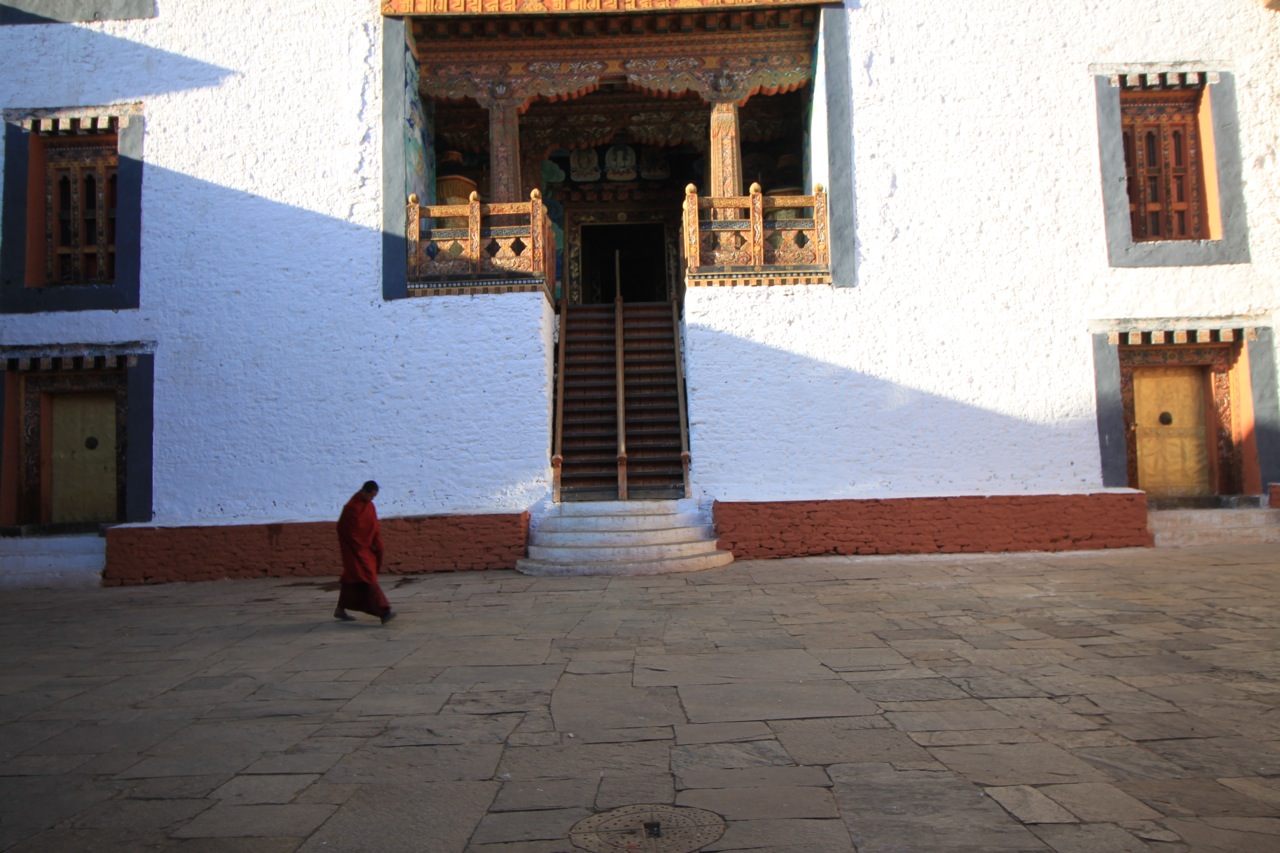
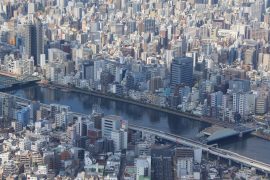
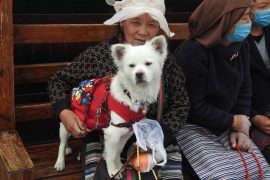
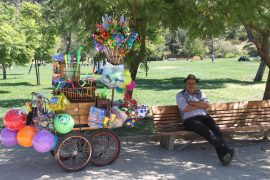

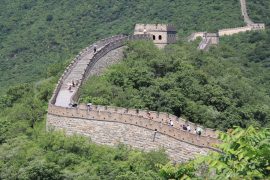
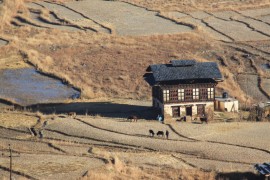
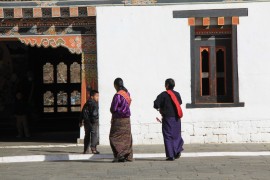
Comments are closed.